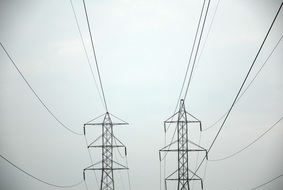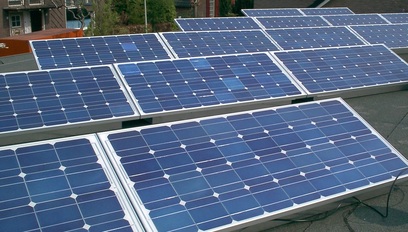It’s great that Indian government is taking a strong stand on the “electricity to all” initiative. In the past century major efforts were done for “Roti, Kapda and Makaan” (Food, clothing and shelter) but in today’s world it has to be “Roti, Kapda, Makaan, Electricity and Internet”. The basic necessities of people have changed and two things have got added.
These five necessities define the quality of life.
These five necessities define the quality of life.
As India moves to become a developed nation from a developing one, Indian government needs to focus on these five factors. All these basic facilities require tremendous investment in infrastructure. Let us discuss about electricity as it impacts all other four basic necessities of life. India currently has a tremendous shortage of electricity. Load shedding is a big problem and it significantly impacts the quality of life. Not having electricity for 12 to 16 hours per day impacts healthcare, industry and personal life. This problem is also faced by many developing countries and I think India has a great opportunity to set up an example about how to provide cost effective energy access to millions of people.
Providing electricity to households can be done in two ways. First, is the current approach of grid connection and second, is use of solar and battery technology to provide power completely off grid. But there is one more approach, which is a hybrid solution. All three options should be on the table to meet the goal of providing energy access to everyone
Providing electricity to households can be done in two ways. First, is the current approach of grid connection and second, is use of solar and battery technology to provide power completely off grid. But there is one more approach, which is a hybrid solution. All three options should be on the table to meet the goal of providing energy access to everyone
|
Hybrid Solutions
Traditional electrical grid works in one direction, a large central power plant connected with huge network of wires and substations, brings electricity to the user. These wires are thousands of kilometers in length and cost a lot of money to set up. This grid infrastructure takes long-term planning and have to anticipate the growth in usage over next 20 years. With explosive growth in standard of living, I guess most of these estimates will go wrong and we will have a bottleneck in the grid infrastructure.
|
Over past decade harnessing the solar and wind energy has become cost effective and it’s already achieving grid parity in some regions. (Grid Parity: same cost of generation as compared to Coal and Natural gas power plants)
The decentralized nature of these resources allows incremental deployment, which is great for capital starved countries like India.
Developing an energy access strategy that can provide electricity to millions of people is a difficult task. Add to that various geographical regions, varied rules and land costs. I am inclined to propose a hybrid solution for this reason. I think we have to look at cost, long-term population pattern, long-term usage pattern and design a robust system. Wind is little tricky to deploy as most of the wind farms are placed far away from the population centers and that means they need grid support. Solar is far more flexible, you can easily develop distributed generation using solar PV technology. Providing electricity to remote villages that are difficult to connect using the grid is possible using solar + energy storage
The decentralized nature of these resources allows incremental deployment, which is great for capital starved countries like India.
Developing an energy access strategy that can provide electricity to millions of people is a difficult task. Add to that various geographical regions, varied rules and land costs. I am inclined to propose a hybrid solution for this reason. I think we have to look at cost, long-term population pattern, long-term usage pattern and design a robust system. Wind is little tricky to deploy as most of the wind farms are placed far away from the population centers and that means they need grid support. Solar is far more flexible, you can easily develop distributed generation using solar PV technology. Providing electricity to remote villages that are difficult to connect using the grid is possible using solar + energy storage
|
Integration
Integration of renewable energy to reduce the cost of traditional grid is another hybrid solution. Electricity demand is not constant throughout the day. The peak periods are in the morning and late evening and rest of the time grid is underutilized. We can use this data to our advantage and couple the electric grid to battery storage to reduce the cost of the grid infrastructure. Laying a 20MW line is far more cost effective than laying a 100MW line so we can use the battery storage to compensate demand peaks and design the transmission and distribution infrastructure based on average daily demand. |
This approach tries to combine the best of both worlds. This approach will also allow better integration of wind power as most of the wind power generation occurs during non-peak demand times. Ultimately any strategy that is deployed has to be cheaper, better and faster to be sustainable. Innovation and competition will quickly defeat any strategy that deviates from this.
Cheaper Faster Better
I strongly believe in market economy so any service even to the poorest people needs to make financial sense. Hybrid solutions provide an opportunity to be responsible, but at the same time not sacrifice feasibility.
Cheaper: Solar PV costs have come down tremendously. For past five to six years, the cost has dropped more than 20% annually. Laying the whole grid infrastructure may not be feasible as compared to putting solar + battery storage. Delivering cheapest cost per kWh should be a priority as India needs to significantly reduce the percentage of income going towards energy. Reducing this percentage will directly impact the standard of living and improve disposable income which will fuel rural growth.
Faster: Billion people with aspirations require fast implementation of strategies. Today’s world does not like to wait, people want instant results and want to see progress made every day. Big infrastructure projects take decades. Laying a new High Voltage Direct Current (HVDC) line connecting major power plant to load center may take few years. Installing a micro grid with solar and battery can happen in less than a year.
Better: Large grid requires a large setup for reliability and stability. Many African countries are simply moving away from grid and using Solar, Battery and Diesel Generator backup to have 100% up-time and cheap electricity. Overall this scheme will be much more efficient on carbon emissions.
Grids are very important. Don’t get me wrong, as an electrical engineer, I think the grid is one of the most powerful assets we have. But at the same time if our goal is to have electricity to all, we need to alter our thinking. We need to change from binary thinking and allow more innovative and out of the box solutions.
Hybrid solution may be just one of the schemes that may work.
I strongly believe in market economy so any service even to the poorest people needs to make financial sense. Hybrid solutions provide an opportunity to be responsible, but at the same time not sacrifice feasibility.
Cheaper: Solar PV costs have come down tremendously. For past five to six years, the cost has dropped more than 20% annually. Laying the whole grid infrastructure may not be feasible as compared to putting solar + battery storage. Delivering cheapest cost per kWh should be a priority as India needs to significantly reduce the percentage of income going towards energy. Reducing this percentage will directly impact the standard of living and improve disposable income which will fuel rural growth.
Faster: Billion people with aspirations require fast implementation of strategies. Today’s world does not like to wait, people want instant results and want to see progress made every day. Big infrastructure projects take decades. Laying a new High Voltage Direct Current (HVDC) line connecting major power plant to load center may take few years. Installing a micro grid with solar and battery can happen in less than a year.
Better: Large grid requires a large setup for reliability and stability. Many African countries are simply moving away from grid and using Solar, Battery and Diesel Generator backup to have 100% up-time and cheap electricity. Overall this scheme will be much more efficient on carbon emissions.
Grids are very important. Don’t get me wrong, as an electrical engineer, I think the grid is one of the most powerful assets we have. But at the same time if our goal is to have electricity to all, we need to alter our thinking. We need to change from binary thinking and allow more innovative and out of the box solutions.
Hybrid solution may be just one of the schemes that may work.


